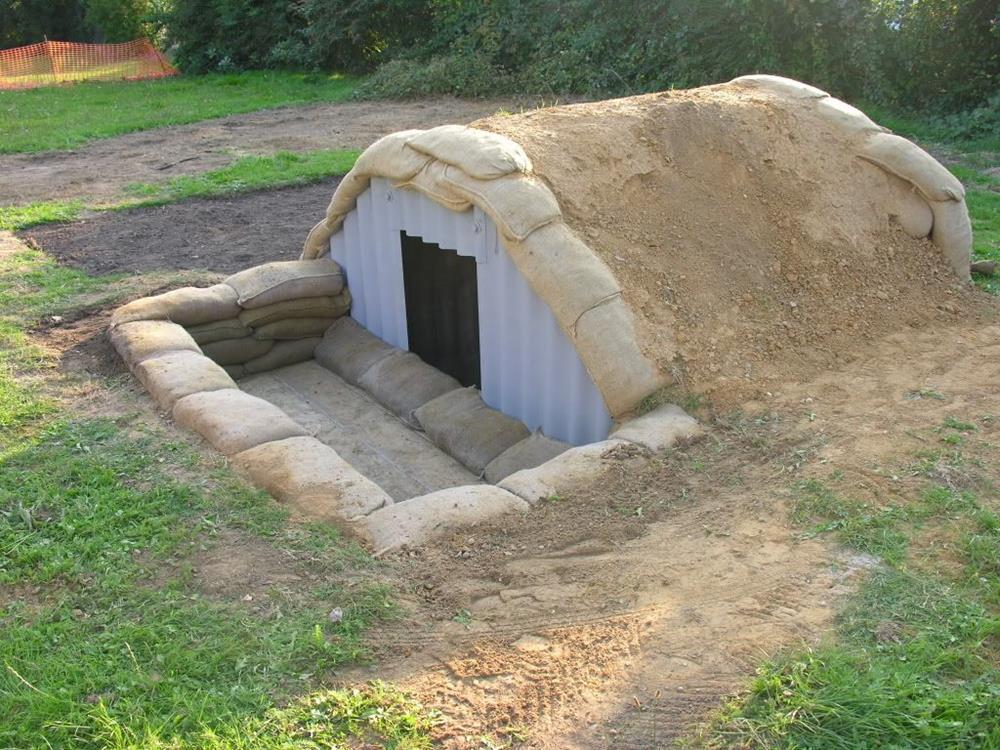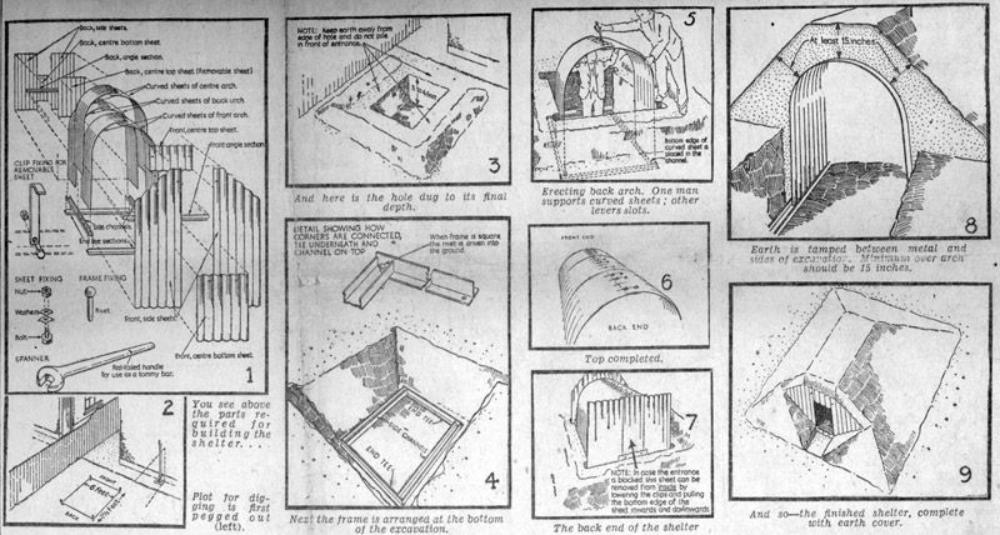North Queensferry School – WWII
1939 – Anderson Air Raid Shelters
| < 1938 Gas Masks | Δ Index | Problems with Anderson Shelters > |
Anderson was also in charge of air-raid shelters. There were two schools of thought on this matter. Should the government build large centralized underground “bomb-proof” shelters or provide small distributed “blast-proof” shelters?
The problems with large shelters are the time taken to reach them and crowds to enter them, and the horrific consequences if a large shelter is breached by a direct hit.
The Anderson Shelter
Anderson’s solution was a small, inexpensive air raid shelter that people could build in their garden. The first Anderson shelter was built in a garden in Islington, London on February 25, 1939. They were supplied free of charge to those earning less than £250 a year, those with a higher income, paid £7.
Over 1.5 million Anderson shelters were given out before the start of WW2 to people in areas that were at risk of being bombed by the Germans, with a further 2.1 million built during the war.
Anderson shelters could hold up to six people and were very easy to build from six corrugated steel panels that were curved and bolted together at the top. They were buried up to a meter in the ground, with a thick layer of soil and turf on top to keep them secure. The corrugated sheets made them strong against compressive force providing protection from nearby bomb explosions. They were provided in kit form with full instructions.
 An Anderson shelter
An Anderson shelter
 Anderson shelter instructions.
Anderson shelter instructions.
The shelter was assembled in a hole to be dug 7½ feet long, 6 feet wide by 3 to 4 feet deep
| < 1938 Gas Masks | Δ Index | Problems with Shelters > |